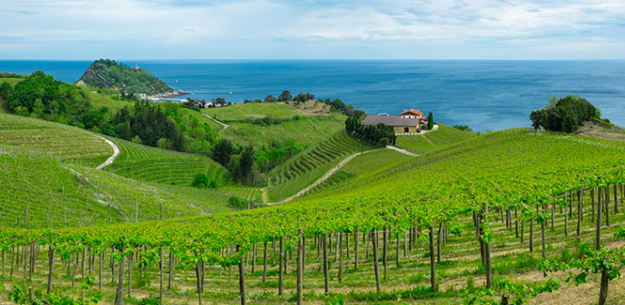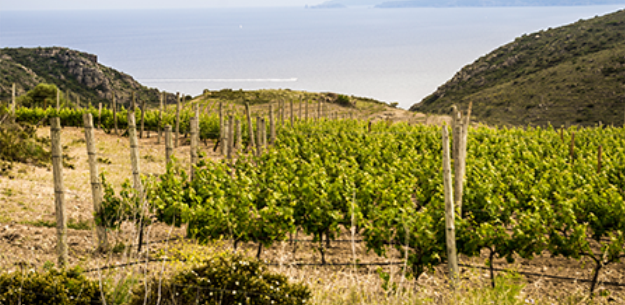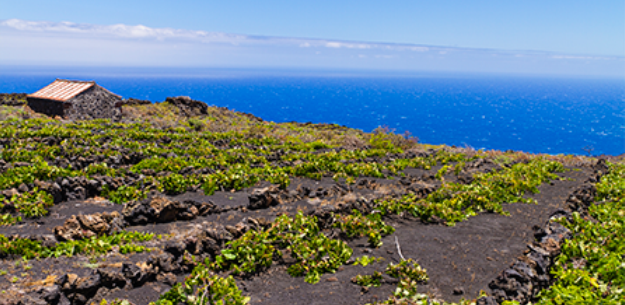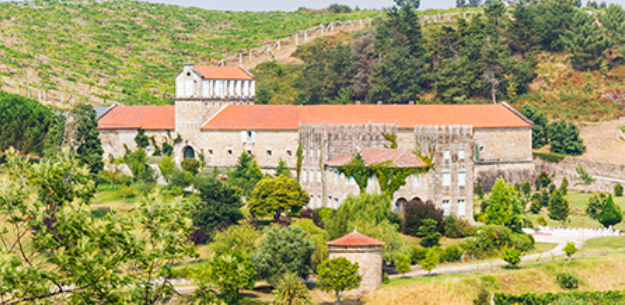.png.transform/rendition-xs/image_image%20(1).png)
Spanish Wines With A Marine Soul
Crispness, acidity, Atlantic aromas, Mediterranean nuances... tasting notes that flow both softly and spontaneously upon analyzing Spanish wines made from vineyards situated close to the sea and, therefore, influenced by its breezes. Wines with a marine soul and a structure contoured by the wind, born with equal influences of the land, the humidity, the contrasting temperatures and the adaptation of certain grape varieties. A complex relationship between the vineyards and the wind, with a delectable final result
On the complex map of Spanish wine making regions, there are some areas that boast yet another conditioning factor, which serves as both an obstacle and a distinguishing element: the proximity of the sea and the power of the wind. Here, the landscape of vines seems to merge with the depth of the marine horizon. And from its vines – made stronger by the wind's lashings and the humid breeze – form clusters of grapes which, in turn, yield wines with a marked personality.
There are numerous areas in Spain with vineyards that are bathed in the freshness of the breeze, which mingles with strong winds like those that leave their mark on the Cantabrian coast and the north Atlantic coast of Galicia, in addition to the trade winds of the Canary Islands and the dry, north wind that rises up in the Pyrenees before whipping the Catalan Costa Brava and some areas of the Balearic Islands.
This influx of wind and breezes does not go unnoticed by the vines, and even less so by those who work them. These wine producing areas have been forced to develop ad hoc cultivation methods to protect them from the wind's lashings, as well as opt for more resistant grape varieties.
The vineyards of the sea
Which Spanish wine regions are most exposed to the effects of the breeze and the sea? Carles Aymerich, the first sommelier at El Celler de Can Roca restaurant, outlines a refreshing tour of these marine wines: "It is important to differentiate between two main influences: that of the Atlantic and the Mediterranean, while remembering that these regions are also heterogeneous, which is to say, the influence of the sea and its winds varies throughout any territory.”
The tour begins with the Txakoli's of the Basque Country and continues east in the direction of Galicia and its Rías Baixas wines. “The Atlantic influence also produces different effects on the wines of the Canary Islands and those of Sanlúcar de Barrameda and Jerez, in Cádiz. From the Atlantic, we move on to the Mediterranean, to point out the wines of Sierra de Málaga, the Marina region of Alicante and the Catalan wines of Alella and Empordá, as well as some areas of Priorat and Penedès”.
Atlantic character
Crispness and acidity are characteristics shared by two types of wines that are notably Atlantic in nature, Basque Txakolí and Galician Albariño. Both regions are well-known to Ana María Onzain, a technical consultant for wine growing and a recognized enologist, who explains one of the keys to the influence of the marine breeze in the vineyards of these two wine producing regions: “The breeze tempers the climate, making it less extreme than in inland areas. Vineyards that are located in close proximity to the sea enjoy milder temperatures that are not subject to brusque temperature changes, and there is barely any threat of dangerous frosts”.
The power of the trade winds
In Denomination of Origin La Palma there is a project by the young wine-grower Victoria Torres, who is at the helm of family winery Matías i Torres. She is all too familiar with the benefits that the trade winds can confer on her vineyards: “Their main contribution is a constant breeze that ventilates the plants during the vegetative period, which is a true ally to combat fungus problems”. There are three grape varieties cultivated by Victoria in La Palma that best support the lashings of the trade winds: white grape Listán blanca and red grapes Bujariego and Listán negro.
Once again the wind serves as a factor in a tense, love-hate relationship. It demands special treatment of the vines, but it also lends interesting characteristics to the grapes and, therefore, the resulting wines: “Our wines are not particularly known for their warmth, but rather for their crispness and lightness. Their density changes on the palate, and the fruit is present in the wines, but it is not fully ripe”.
The west wind of Jerez
Jesús Barquín is an expert on the fortified wines of Andalusia (Sherries) and, together with enologist Eduard Ojedo, is responsible for Equipo Navazos.
Barquín points out that “the influence of the breeze and drafts of air on the biological aging of the fino and manzanilla wines from this region is very powerful, to such an extent that it is considered a fundamental factor when building a winery: ventilation holes are located as high up as possible, among other things so that they can trap the crisp west wind and maintain a desirable humidity level.”
All of these factors related to air, the breeze, temperature and humidity levels, are important for the development of biological aging, which in turn leads to the appearance of a whitish layer called “flor” on the top of the wine in the barrels from Jerez. This layer is composed of microorganisms and yeasts that come from the wine itself. It prevents the wine from coming into contact with oxygen, thereby differentiating the biological aging of finos and manzanillas from the oxidative aging of other Jerez wines like olorosos.
The dreaded north wind
This journey through Spanish wines marked by marine influences and the power of the wind, continues in the areas protected by Denominations of Origin Málaga and Sierras de Málaga, as well as the crisp wines of La Marina in Alicante and the wine tradition of the Balearic Islands. It eventually arrives in Catalonia, a region whose tramontana, or north wind, forms part of popular lore.
This air from the Pyrenees can be especially sensed in the wines of Denomination of Origin Empordà, where wineries like Celler Hugas de Batlle, in the town of Colera (Girona), make wines that are characterized by three environmental factors: the winds of the tramontana, the proximity of the Mediterranean Sea and the slate-rich, mineral soils.
Eduardo Hugas and enologist Oriol Guevara are intimately familiar with the effects of the north wind on the vineyards and their influence on the area's wines. It is a balancing act between the dry torrent from the north that is the tramontana, and the soft humidity of the Mediterranean breeze.
Land, sea, grapes and wind; all under the watchful eye of nature and the necessary human action that together offer consumers something more than just an alcoholic beverage, rather it is a landscape in their glass and an etching on their memories.
Crispness, acidity, Atlantic aromas, Mediterranean nuances... tasting notes that flow both softly and spontaneously upon analyzing Spanish wines made from vineyards situated close to the sea and, therefore, influenced by its breezes
Rodrigo García/©ICEX
Translation: Adrienne Smith/@ICEX




- Spanish wines
- Spanish wines
- Spanish wines
- Spanish wines

